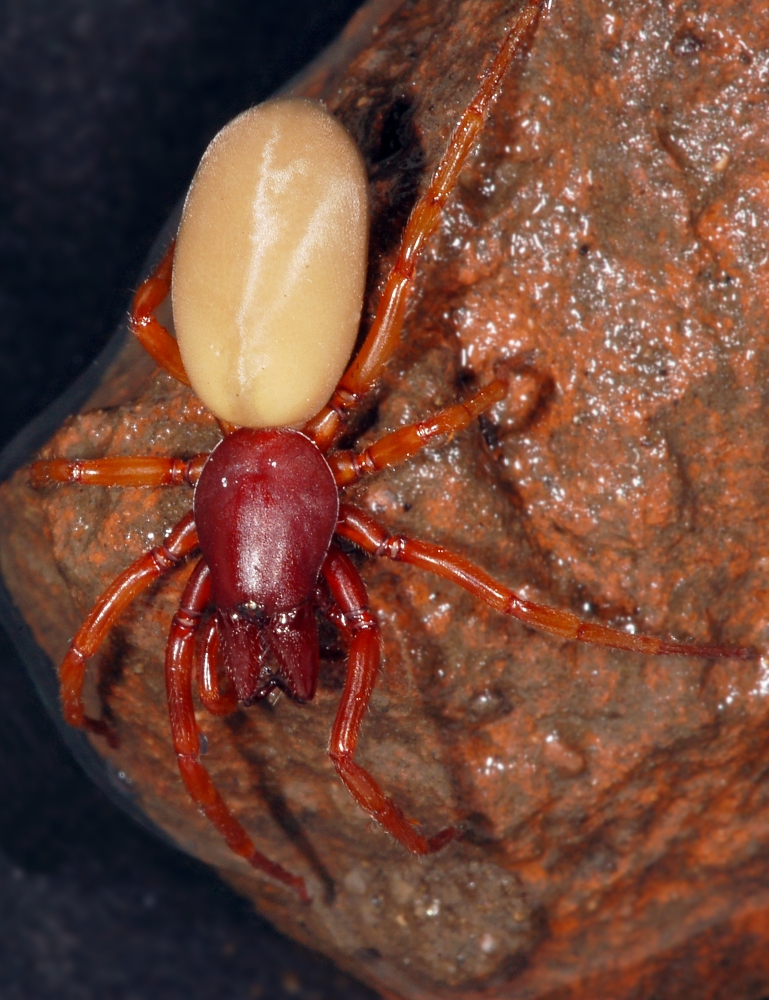- Dysdera
image_caption = "D. erythrina"
image_width = 250px
regnum =Animal ia
phylum =Arthropoda
classis =Arachnida
ordo =Araneae
subordo =Araneomorphae
familia =Dysderidae
genus = "Dysdera"
genus_authority = Latreille,1804
diversity_link = List of Dysderidae species#Dysdera
diversity = 237 species
range_
range_map_width = 250px
subdivision_ranks = Species
subdivision = "D. crocata"
"D. fuscipes"
"D. mucronata"
"D. seclusa"
"D. scabricula"
"D. vivesi"
"D. atlantica"
"D. caeca"
"D. drescoi"
"D. lucidipes"
"D. mauritanica"
"hundreds more""Dysdera" is a genus of spiders from the family
Dysderidae , with more than 200 species. They occur mostly in Eurasia fromCentral Asia to Spain, extending into northernAfrica (eg.Morocco ,Egypt ,Ethiopia ). However, at least two species occur inSouth America ("D. solers" inColombia (possibly arelict species from the post-miocene era) and "D. magna" inBrazil andUruguay ), and several species are found on smaller islands, like the Canary Islands."D. crocata" is the only cosmopolitan species of the whole family.Description
These mostly
Mediterranean spiders are primarily nocturnal running hunter spiders. They spend the day in silk cocoons under stones or bark. Some species always live in caves, others do so from time to time. "D. unguimannis" is considered the most remarkable case oftroglomorphism (adaptation to cave life) in the "Dysdera" genus.Radiation in the Canary Islands
The Canary Islands are from 22 million years (
Fuerteventura ) to 0.8 million years (El Hierro ) old.43 endemic species of "Dysdera" are found on the volcanic archipelago of theCanary Islands , 100km off the northwestern coast ofAfrica . 36 of these species probably descended from a single ancestor; in total two to four colonization events are assumed. This probably happened byrafting , or even more likely by transport onfloating island s, for "Dysdera" is not known to use ballooning. "D. lancerotensis" is the only species where an independent origin from continental ancestors is unquestionable; it was originally described as a subspecies of "D. crocata".While some of the remainingMacaronesia n archipelagos have been colonized from the Canaries, theAzores have been independently colonized from the continent. The radiation of "Dysdera" is surpassed on the Canary Islands by thesnail genus "Napaeus " (Stylommatophora :Enidae ) with more than 50 endemic species, the millipede genus "Dolichoiulus " (Julidae ) with 46, and the beetle genera "Attalus" (Malachiidae ) with 51 and "Laparocerus " (Curculionidae ) with 68 endemic species.References
* (2008): [http://research.amnh.org/entomology/spiders/catalog/index.html The world spider catalog] , version 8.5. "American Museum of Natural History".
* Arnedo, M.A., Oromí, P. & Ribera, C. (2001). Radiation of the spider genus "Dysdera" (Araneae, Dysderidae) in the Canary Islands: Cladistic assessment based on multiple data sets. Cladistics 17(4):313-353. DOI|10.1006/clad.2001.0168 - [http://www.blackwell-synergy.com/doi/abs/10.1111/j.1096-0031.2001.tb00129.x?cookieSet=1&journalCode=cla Abstract]
Wikimedia Foundation. 2010.

